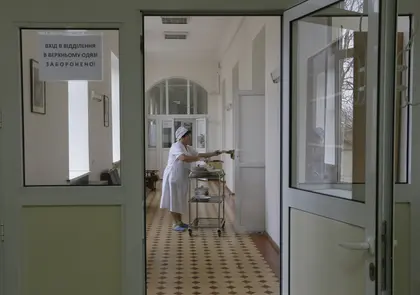Unlike in
many other countries, Ukraine can’t boast much progress in curbing the spread
of the deadly disease. Tests reveal 57 new cases of HIV positive Ukrainians
each day and 11 daily AIDS-related deaths.
“Inadequate
HIV testing and limited access to antiretroviral therapy increases AIDS
mortality and accelerates the spread of HIV,” International HIV-AIDS Alliance
in Ukraine said in a statement issued on the occasion of AIDS Day. “Only 22
percent of those who need treatment actually receive it.”
JOIN US ON TELEGRAM
Follow our coverage of the war on the @Kyivpost_official.
Patients
occasionally face shortages of medical supplies, even at the leading Ukrainian
AIDS clinic. That center, where the gravest cases of AIDS-related diseases are
treated, is located on the compound of the Kyiv Pechersk Lavra Monastery.
“Four
months ago, 600 of our patients were at risk of interruption of their therapy,”
said Svitlana Antoniak, head of the HIV department at the Lavra clinic. “That’s
why we divided the packages (of other patients’ pills),” she added.
One of the
clinic’s patients, Lesia, 40, said the antiretroviral therapy has saved her
life and the life of her child. She has been undergoing therapy for 10 years. A
dental surgeon by trade, Lesia believes she was infected with HIV from a
patient. And she passed it on to her baby during pregnancy. Despite living in an
urban center, Lesia always comes to Kyiv because “the medications don’t reach”
her local AIDS center. Another reason she travels to Kyiv is to keep her HIV positive
status secret, fearing stigmatization.
“Nobody at
work knows about my (having) HIV, otherwise I would be fired,” said Lesya.
HIV
advocacy groups have for years criticized the Ukrainian government for not
sufficiently financing the treatment of HIV and paying little attention to preventing
the spread of the virus.
World
Health Organization officials have urged that additional resources are needed
to curb the spread of HIV/AIDS in Eastern European countries.
“Only one
patient in four receives the needed antiretroviral treatment in the eastern
part of the region, one of the lowest rates in the world,” said Zsuzsanna
Jakab, WHO regional director for Europe. “We urgently need to scale up
resources, especially in Eastern Europe and Central Asia. Every euro spent now
on the response to HIV will largely be paid back with savings on future
treatment costs, not to mention the societal gains from keeping people healthy
and productive.”
Ukraine
together with Russia accounted for 90 percent of newly registered cases of the virus
in the region in 2011, said Tetiana
Khan, a specialist at the East Europe and Central Asia Union of People Living with
HIV. She added that when a sick person doesn’t take even one pill at the
prescribed time, the entire treatment becomes ineffective, so any shortages
with medications may lead to grave consequences.
But Lesia
said medication shortages in her home city are common thing. “Many people come
(to the AIDS center) for medication and hear – ‘wait (for the pills) until
somebody dies,’” she said.
Kyiv Post staff writer Oksana Grytsenko can be
reached at [email protected].
You can also highlight the text and press Ctrl + Enter




